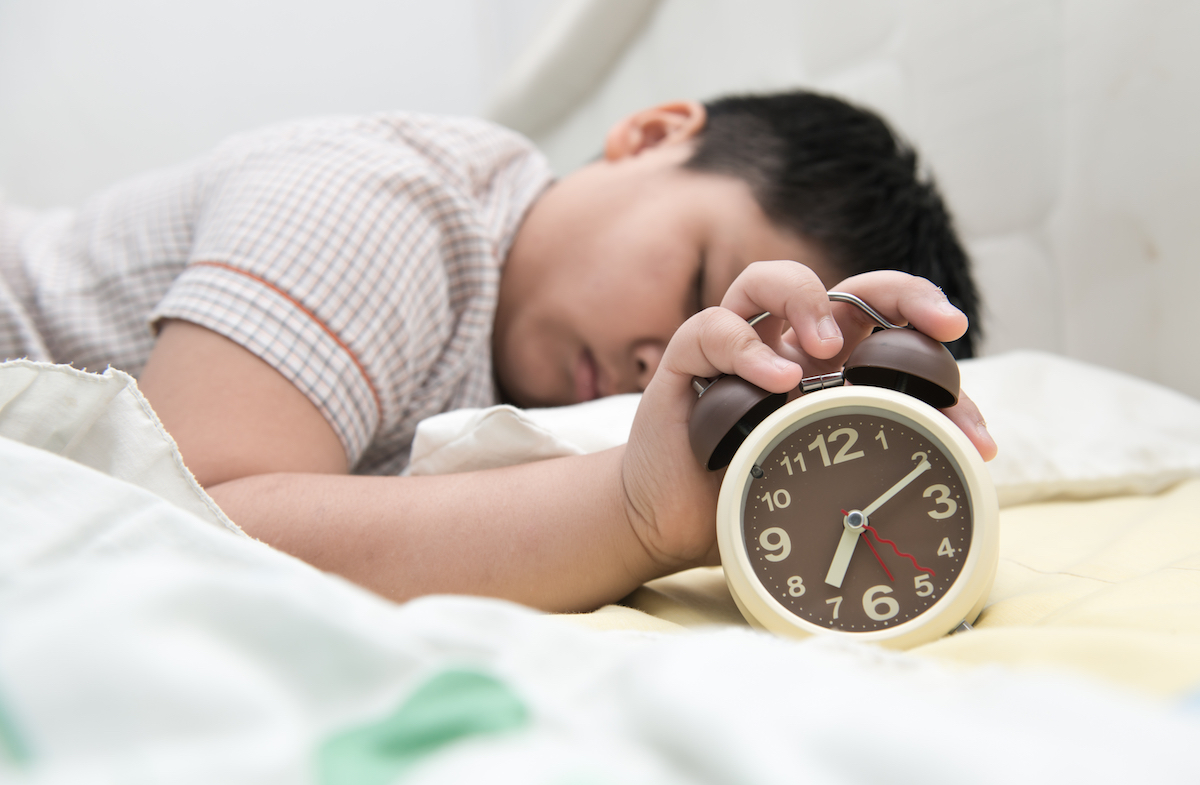Contents:
- Medical Video: Max: communication with a deafblind child
- Tips for communicating smoothly with deaf children
- 1. Communication is not only with spoken language
- 2. Keep talking as usual
- 3. Always respond to your child
- 4. Create a supportive visual environment
- 5. Introduce sign language
- 6. Introduce the outside world, don't limit your child's activities
- 7. Install hearing aids
Medical Video: Max: communication with a deafblind child
Facing the fact that your child is born unable to hear is a difficult situation. But hearing loss does not limit your child from learning and communicating. With proper handling, your child can develop just like any other child. Following are some of the things parents can do to communicate more smoothly with deaf children.
Tips for communicating smoothly with deaf children
1. Communication is not only with spoken language
In the early months of birth, your child certainly can't speak. Babies are born with the ability to cry. That's the way to communicate for now.
The baby's cry will tell you what he needs or feels, whether it's hunger, wet diapers, cold feet, drowsiness or feeling tired, wanting to be hugged, and so on. Over time, you can better understand your baby's needs and respond well.
Communication is also not always in the form of spoken language. Eye views, body language, facial expressions, warm touches, and movements of your hands are the way you communicate with them for the time being.The way you respond to your needs, care for, and play with your baby has become a communication method that strengthens the inner bond between the baby and his parents.
2. Keep talking as usual
Even though your little one can't hear well, you still need to keep asking him to talk whilelooked into his eyes.
Ono baby develops quickly. Children usually learn to communicate by hearing what people around them say. So, it is very important to stimulate the entry of sound into the brain as quickly as possible and as often as possible.
Hearing voices and words from an early age will help your child develop his language. Find simple ways to introduce new sounds every day by:
- Play with your baby who teaches them to imitate, like playing cilukba. This game teaches your baby to communicate alternately.
- Talk about what you are doing. For example, "We're going to grandma's house", or "Daddy is washing dishes".
- Read stories for your child.
- Sing together
- Show story books that have interesting images and clear text. When it's already rather large, teach the child to recite the easy vocabulary in the book.
Repetition of vocabulary pronunciation is very important to do every day. Children who are deaf from birth but continue to be trained to hear sounds from an early age can develop together with other children his age who have no hearing loss.
3. Always respond to your child
As the growth grows, the child may be more fluent to express a few words. Always respond to what your child feels.Don't ignore what your child says.
By responding, this shows the child that you are interested in what he wants to say. Responding can use facial expressions, body language, or movements.
Vice versa. Give your child the opportunity to respond to your words with gestures or with spoken language that he can. Maybe this will take longer than children who can hear well. However, you can encourage it by responding back.
For example, you want to ask your child what you want to play, you can say "Deck, what do you want to play?" If the child has difficulty answering or you don't understand what he is saying, you can offer choices for him "Want to play this robot? or play cooking? (while showing the toy)
4. Create a supportive visual environment
Body language, facial expressions, and movements in carrying out daily activities are the most important manifestations in communicating with deaf children. As you speak, show facial expressions and clear eye contact with the child to get his attention.
When storytelling for children, describe the picture in the book. When he is older, ask him to point to the picture you are calling. Or, ask your child to say what the picture is.
5. Introduce sign language
Along with growth and development, start slowly to introduce a variety of sign language to your child. If you are not familiar with this, you should first train yourself to master basic signaling vocabulary, such as 5 vowels (AIUEO), "mama", "daddy", "your child's name", "eat", and "drink".
There are some people who think that teaching children to speak sign language will hinder their speech. This assumption is wrong. The 2010 Clin Ethics journal reported that training children to use sign language early can help them understand the contents of the conversation more clearly, making it easier to interact with people around.
Sign language can be taught as early as possible, since the age of 6 months the baby has begun to understand simple signals. But usually the baby does not have good hand control to be able to give a response to his parents until he is around 8-9 months old.
6. Introduce the outside world, don't limit your child's activities
In addition to spending time with family, make your child open to the outside world.Children who have limitations in hearing really need visual activity involvement to understand something.
Also involve other family members to interact with children. The more often the child sees family members using the language he can, so he can learn more quickly. Children also become more confident and dare to communicate.
The more diverse activities that children do and the more diverse people who interact with themselves, the more they will help to recognize and understand new vocabulary. Children will also be more courageous in telling stories or communicating with people around them.
7. Install hearing aids
At present, all babies are usually tested to check their hearing immediately after birth. That means if your child has hearing problems, they can immediately use a hearing aid, even at a new age of a few weeks.
Deaf children from birth can adjust to their peers when they are 5 or 6 years old if they have had a cochlear implant since they were 1 or 2 years old. This tool is safe for use for children.
A research cited by the US National Institute of Health proves that cochlear implants that are installed before 18 months of age can make children hear better, understand various sounds and music, even talk to their friends when they grow up.
Furthermore, deaf children who are accustomed to using implants can have language skills comparable to children whose hearing is normal. In fact, they can attend school well in ordinary schools. Of course this is very helpful for them in their activities onward.













